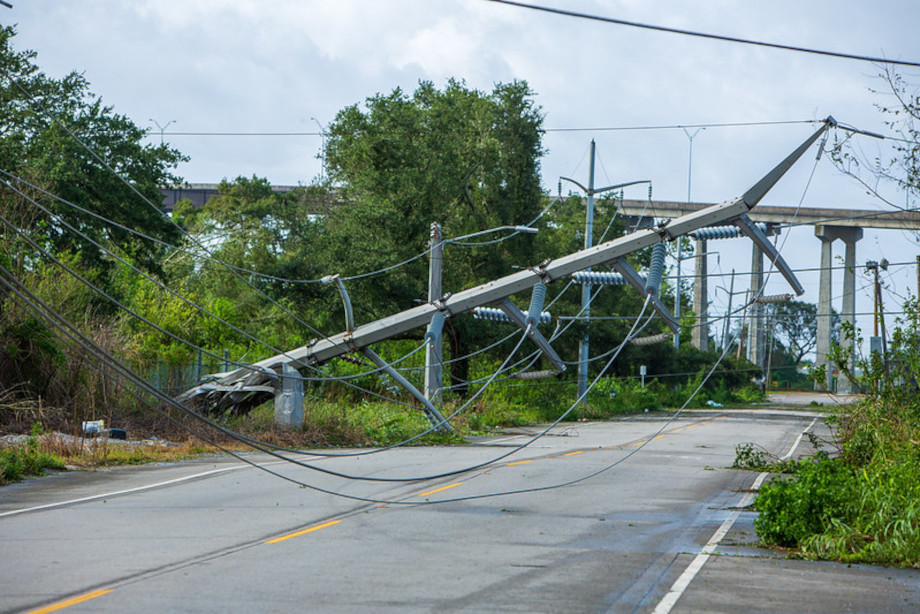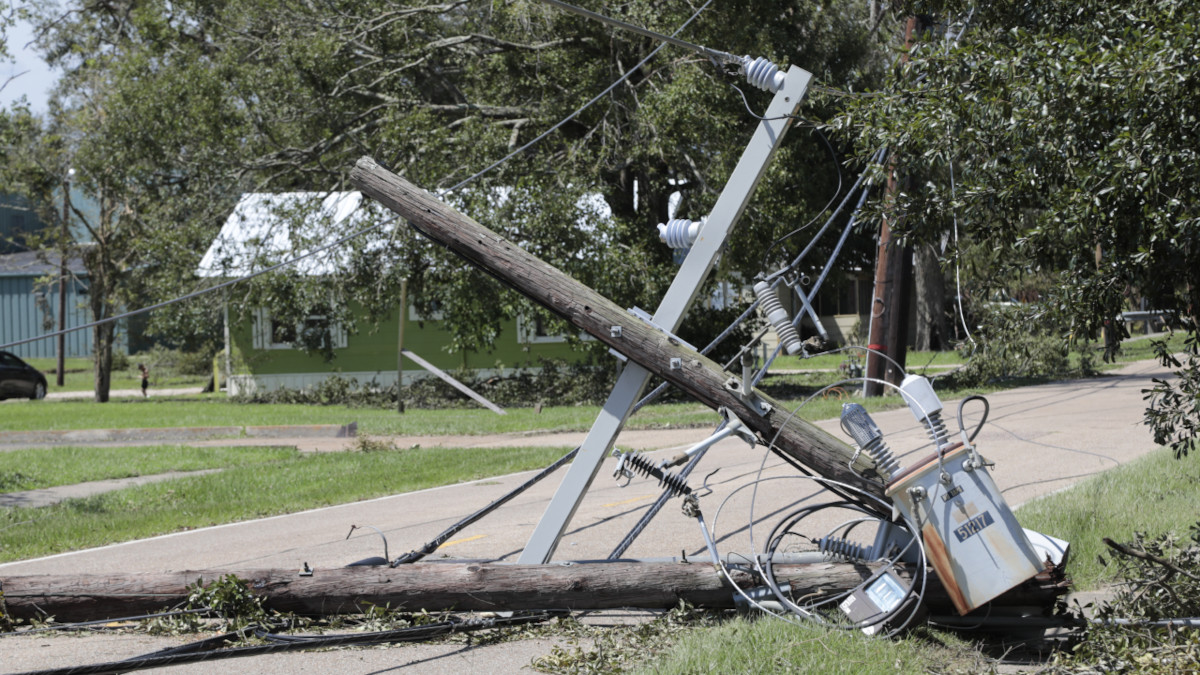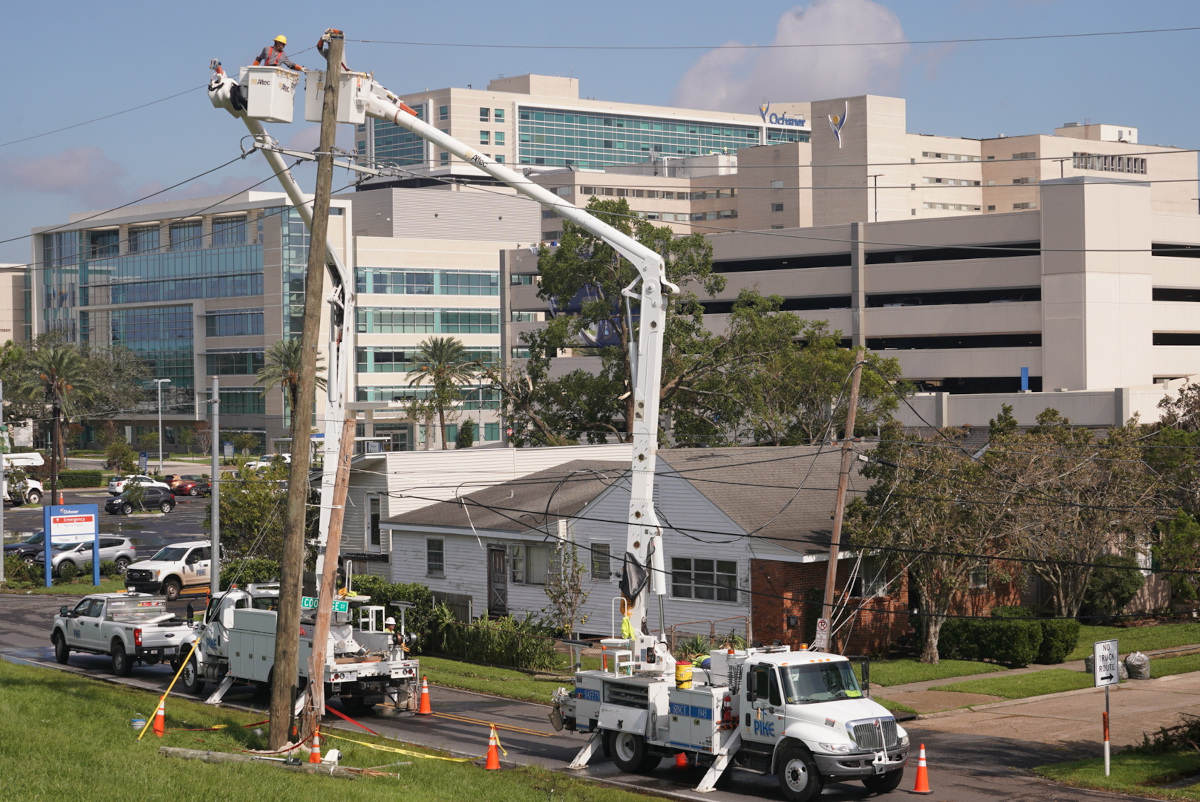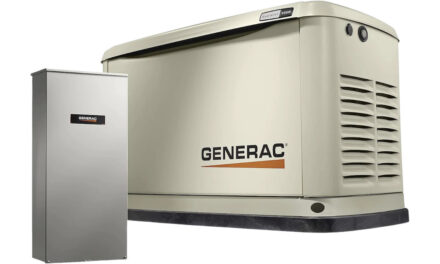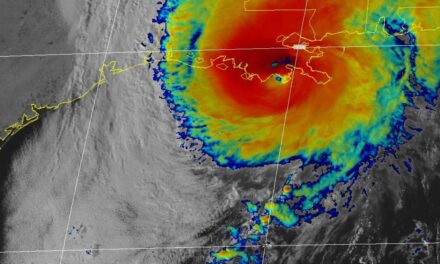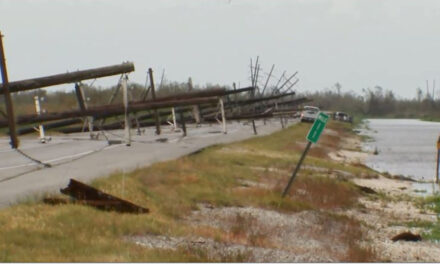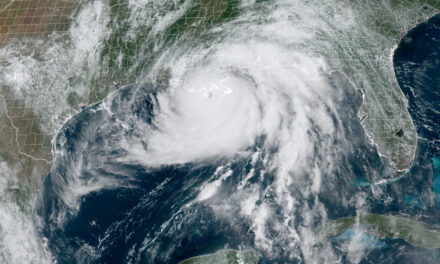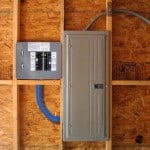Transmission cables lay on a road beside the twisted and broken remains of utility pole in Southeast Louisiana following Hurricane Ida, a category 4 storm that struck New Orleans and Louisiana on Sunday, August 29, 2021. (Entergy Corp Photo.)
Eight Major Transmission Lines Failed During Hurricane Ida
Three days after category four Hurricane Ida made landfall, residents of New Orleans and southeast Louisiana face the possibility of going weeks without power. Ida caused extensive damage to local distribution grids and the eight major transmission lines that serve the region. The outage affects over 1 million utility customers in southeast Louisiana.
“As a result of Hurricane Ida’s catastrophic intensity, major transmission lines that deliver power to several Louisiana parishes are currently out of service. Damage to eight high-voltage lines took out power for New Orleans and Jefferson, St. Bernard and Plaquemines parishes, as well as parts of St. Charles and Terrebonne parishes. One transmission tower that withstood Hurricane Katrina 16 years ago, fell Sunday night. The tower’s conductor landed in the Mississippi River.” ~Entergy Corporation
Restoration is under way where it is safe to do so, and where power can be received. Damage assessments continue today for all portions of the service area most affected by Ida. Those in the hardest-hit areas could experience power outages for weeks: https://t.co/y7EMqlXj50
— Entergy (@Entergy) September 1, 2021
Michelle Bourg, vice president of transmission asset management, explains what happened when historic Hurricane #Ida rendered all eight high-voltage lines out of service for the Greater New Orleans area. Stay updated on our Hurricane Ida hub: https://t.co/88eYPO2pXG pic.twitter.com/ewyNSctUnP
— Entergy New Orleans (@EntergyNOLA) September 1, 2021
FEMA Recommends a Backup Power Source for Hurricane Preparedness
Local distribution lines carry electrical power from substations to homes, businesses, institutions (hospitals, nursing homes) and industry. Transmission lines bring power from the national grid to the substations.
It’s a complex system that, for the moment, lies in twisted and broken cables and fallen utility poles and towers. Entergy, the primary local utility for New Orleans and Southeast Louisiana, spent the first two days assessing the damage and determining the best plan for restoration. As of 10:00 AM on September 1, crews had and restored power to approximately 77,000 customers. Assessments will continue for at least a few days.
Nearly 1 million utility customers remain in the dark. Entergy has proposed a plan to restore power to critical infrastructure—hospitals, nursing homes, and first responders.
New Orleans Residents Use Generators for Power
Residents who didn’t evacuate now face life without power. Those with a generator will fare better than others, provided they have a supply of fuel. Natural gas is probably the best option while the city gets back on its feet.
Nine people are in the hospital with Carbon Monoxide poisoning after running their generator indoors. Even with garage doors wide open, CO continues to accumulate and can enter the home.
Follow the Hurricane Preparedness Series at Norwall Power Expert
Norwall PowerSystems urges people to follow basic safety rules while using portable generators.
- Never run a generator indoors or in any confined space, like a garage or shed. Even with the windows and doors open, the generator will fill the house or space with carbon monoxide, a colorless, odorless gas that can reach fatal levels in minutes.
- Keep Portable Generators at least 10 to 20 feet from the home where the wind won’t blow exhaust against the home or a neighbor’s home.
- Use outdoor rated extension cords with 12-gauge wire for generators with 20-amp outlets.
- The best and safest connection connects the generator to the house with a generator cord and a manual transfer switch. Bonus: power your central air conditioner this way.
- Never, under any circumstance, plug your generator into an outlet using a homemade power cord with two male ends (called a suicide cord for obvious reasons.) Backfeeding your home this way is dangerous and presents an electrocution hazard and fire hazard. It could also permanently damage your generator.
Entergy Utility Crews Work to Restore Power to Ochsner Medical Center
New Orleans Electrical Power Restoration Options
The preferred solution, and most viable for permanent restoration, would repair the critical transmission lines that tie the Greater New Orleans region to the national electric grid. Given the substantial damage that crews must repair and the power needs of critical infrastructure, it appears that Entergy has chosen the second option in order to get the power on for hospitals, nursing homes, and first responders.
The Greater New Orleans Region has two power plants of its own. New Orleans Power Station and Nine Mile Point Power Station have a combined capacity of about 600 Megawatts (600 million watts). The region needs about 1100 Megawatts for full restoration.
The second option turns the region into an island of power. This eliminates the greatest obstacle to restoring power—the damaged transmission lines. Lines from the power stations must be repaired, but that is faster and easier than rebuilding the towers that support the transmission lines and raising new high-voltage cables. The region does not have enough capacity for full restoration, but it could generate enough power to get about half the lights on.
Meanwhile, crews are working to repair damage to distribution lines through neighborhoods and commercial areas. Hospitals and nursing homes are first in line with the first responders.
Entergy has over 20,000 people working to restore power. It will take time, but they will get the lights on. Hopefully, it won’t take a month or longer as some have projected.

